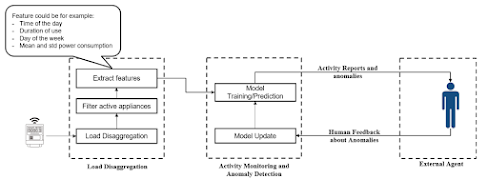
Energy used to make and provide online services is an important
consideration for many reasons. Production and delivery of online
services require energy, and that energy has a direct impact on the
environment. The energy used to create and provide online services often
comes from burning fossil fuels, such as coal, natural gas, and oil.
This burning releases carbon dioxide (CO2) and other pollutants into the
atmosphere, contributing to global warming. Burning fossil fuels also
releases other harmful pollutants, such as particulate matter, sulfur
dioxide, and nitrogen oxides, contributing to air pollution and can
cause serious health problems. Increased energy consumption also has a
direct effect on our environment. As energy consumption increases, so
does the demand for resources such as coal, natural gas, and oil. This
can lead to the destruction of ecosystems and habitats, as well as the
displacement of communities. Additionally, burning these resources to
produce energy contributes to climate change, causing a shift in
weather patterns, rising sea levels, and an increase in extreme weather
events. The energy used to provide online services also has an impact on
the cost of providing these services. The more energy used to power the
servers and networks, the more expensive the services become.
Additionally, higher energy costs can lead to higher consumer prices, as
companies must pass on the extra costs to their customers. Finally,
suppose energy used to provide online services is generated from
non-renewable sources, such as coal and oil. In that case, it means that
the energy used to power these online services will eventually run out,
which could negatively impact the availability of these services in the
future. Overall, it is essential to consider the energy used to make
and provide online services. Burning fossil fuels to power these
services contributes to air pollution and global warming while also
increasing costs. Additionally, the use of non-renewable resources to
generate energy could lead to a decrease in the availability of these
services in the future.
A prominent example of online services is
AI chatbots that can provide the user with answers to almost any topic.
Other than a search engine that only finds matches of the search text
in the indexed documents, AI chatbots can compose new information by
drawing connections between the vast amount of information they have
been trained with. AI programs like ChatGPT are a highly relevant
development because they significantly improve the user experience and
enable people from all domains to access sophisticated AI technology.
Open AI programs make AI more accessible, allowing developers to share
and collaborate on AI models. It also helps reduce development costs and
makes integrating AI into existing applications easier. By allowing
developers to access and build upon existing models, they can create new
and innovative applications that can benefit everyone. Developing AI
models helps automate tedious tasks and reduce the time spent on manual
labor. By using AI models, businesses can automate mundane tasks and
improve their workflow. AI models can also help to improve customer
support and increase customer satisfaction. AI models are also important
for predicting future trends and predicting customer behavior.

But,
despite the fact that users of AI often get free access or a generous
free trial, developing and training an AI model does not come for free
when we consider the energy budget. The Carbon footprint of training
ChatGPT has been estimated to be 1287 MWh [1], in addition to running
the services. Are 1287 MWh a number to be concerned with? Probably yes.
Is it a number so high that we immediately need to banish AI training
for the sake of the environment? I don't think so.
When
relating 1287 MWh to a single person, it is a lot. It would mean
driving an average European car on fossil fuels for 4,5 Mio km. That is
enough to travel the whole road network of the United States or
equivalent to the carbon footprint of a flight passenger going form
London to New York 320 times.
Nevertheless,
ChatGPT has more than one user. In fact, it is one of the
fastest-growing online platforms in the world, with around 100 Million
users at the time of writing. Dividing the development costs by the
users, it amounts to 0.01287 kWh or roughly 1% of the energy required to
print a book.
In
other words, if users can utilize the AI system to automate mundane
tasks and improve their workflow, the energy spent on creating the AI is
probably well-invested. Many usages are recreational, and sometimes the
AI provides more fiction than facts, but so is the case with books.
However, we need to keep our eyes open on two issues:
- The
operational cost of running the system: "Cost" would mean here energy
cost as well as financial cost. If the system does not work here
efficiently, we could end up in a much higher energy waste than 1287 MWh
- Further
developments in training new AIs: competitors might train their own
AIs, no matter the (energy) cost. And models are expected to grow in
complexity and capabilities, probably also significantly raising the
energy required for training a single model.
So let's keep an eye on further developments.
[1]
Patterson, D., Gonzalez, J., Hölzle, U., Le, Q., Liang, C., Munguia,
L.-M., … Dean, J. (4 2022). The Carbon Footprint of Machine Learning
Training Will Plateau, Then Shrink. Computer, 55, 18–28. Retrieved from
http://arxiv.org/abs/2204.05149










